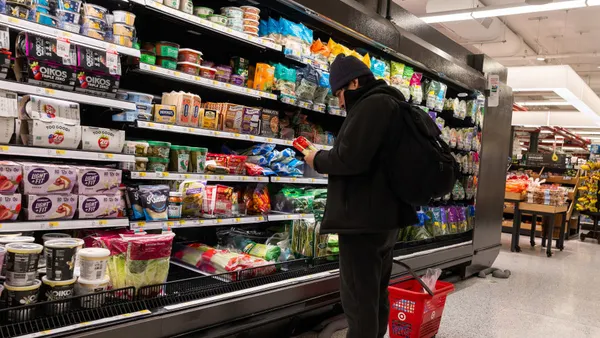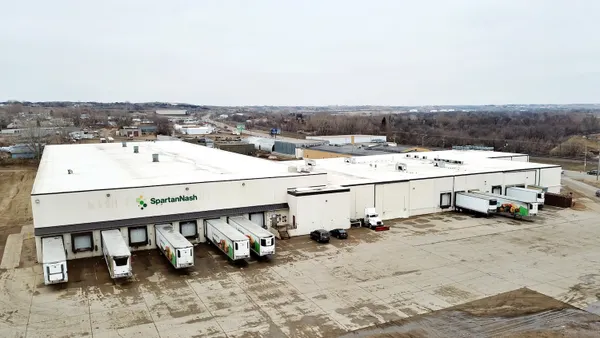Dive Brief:
- At George Mason University, students can order food and drinks for delivery through a fleet of 25 robots on wheels, in what Starship Technologies calls the largest deployment on a college campus, according to The Spoon.
- The service, created in partnership with the university's food management firm Sodexo North America, integrates with student meal plans, tacking on a $1.99 delivery fee for delivery anywhere on campus from 8 a.m. to 9 p.m. Starship's bots currently deliver items from campus restaurants Blaze Pizza, Starbucks and Dunkin'.
- Meanwhile, Ohio State University installed a "pizza ATM" in one of its cafeterias — a glorified vending machine that heats up pre-made cheese or pepperoni pies in about three minutes. The machine holds 70 10-inch pizzas that cost $8. Students bought 400 in the first week, according ABC News.
Dive Insight:
Robot delivery creators have found college campuses to be prime testing zones due to the enclosed areas with large swaths of pedestrian paths. They also might find more sympathetic regulations on private campuses, avoiding pesky city rules that have hindered bot movement. In San Francisco, bots can't move faster than three miles per hour and a human operator must be within 30 feet, which essentially defeats the purpose of using a robot.
In addition to Starship's robot deployment just outside of Washington D.C., Kiwi has been delivering food on the University of California, Berkeley campus since 2017 and at UCLA since October. Machines similar to the pizza ATM also have been successful at Case Western Reserve and Xavier universities, according to Ohio State News.
The college campus robots are about the size of a small cooler on wheels, similar to the recently unveiled rover from Postmates. They have all-terrain wheels for bouncing lightly over uneven sidewalks or a crooked curb cut, the sloped end of sidewalks developed to accommodate people in wheelchairs. Berkeley actually pioneered curb cuts in the 1970s, making it a compelling ground-zero for robots who definitely need those ramps to do their jobs without tipping right into a gutter.
All of these pilots, however, are just that — tests for a potential future where robot carts share our sidewalks and roads carrying all manner of products.
After vowing to unleash 1,000 rovers on corporate and academic campuses by the end of last year, Starship retreated to focus on perfecting the systems it already has in place. Now with two dozen at George Mason, Starship continues to test the promise of autonomous delivery to students — which is likely an enticing offer, given the fact that many students lack access to full kitchens on campus and have busy schedules. Though the fleet only delivers from one pizza chain and two coffee houses at present, the university plans to add more campus eateries to the list, per The Spoon.
Autonomous food delivery from restaurants and grocery both stand to benefit from more than just tired college students and busy parents. They also pose a brighter future for people with disabilities and the elderly, who can’t easily travel to a store or restaurant, and for lower-income consumers looking for options outside their area. Food vending technology ticks less of these boxes, but fills a void for hot, fresh food after-hours — a concept that could fill a gap on college campuses and in certain office buildings.
As the technology matures, costs will fall and the customer base will expand. More than a third of regular takeout customers order weekly, and about 40% of consumers order groceries online for delivery once a month. This growing demand, combined with the novelty of delivery by a cute robot on wheels, suggest a solid path to growth for autonomous food delivery.













